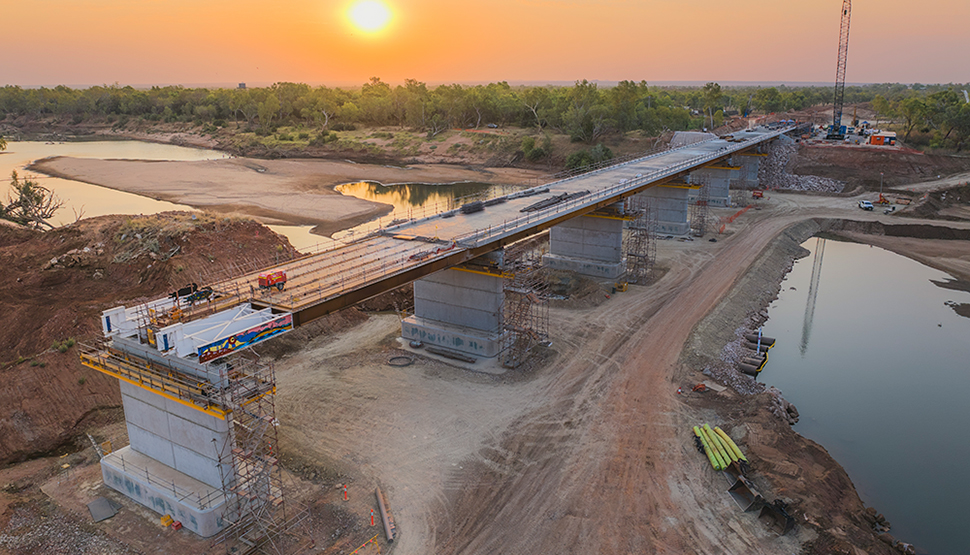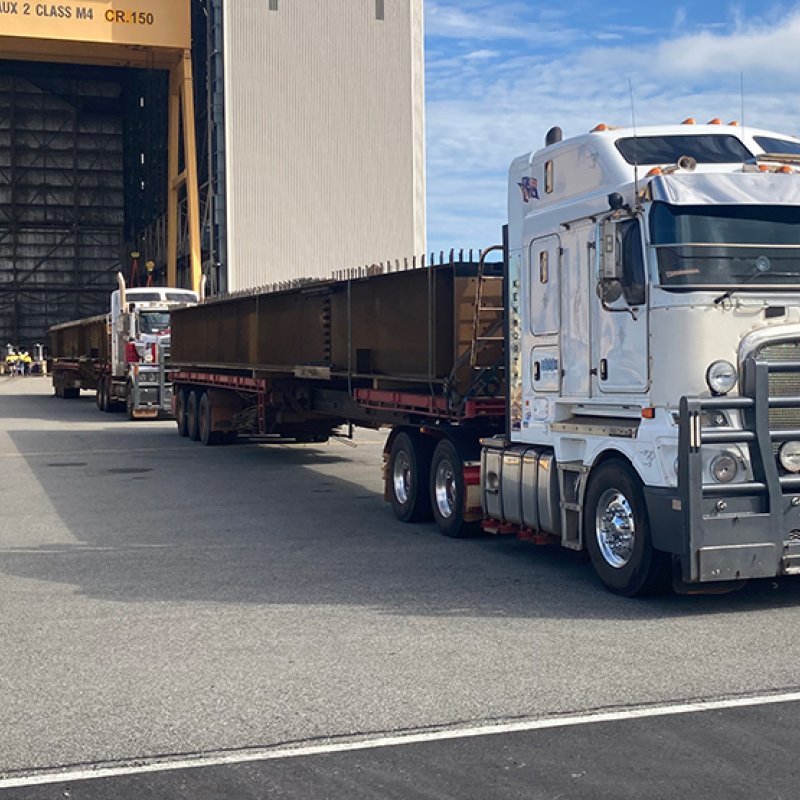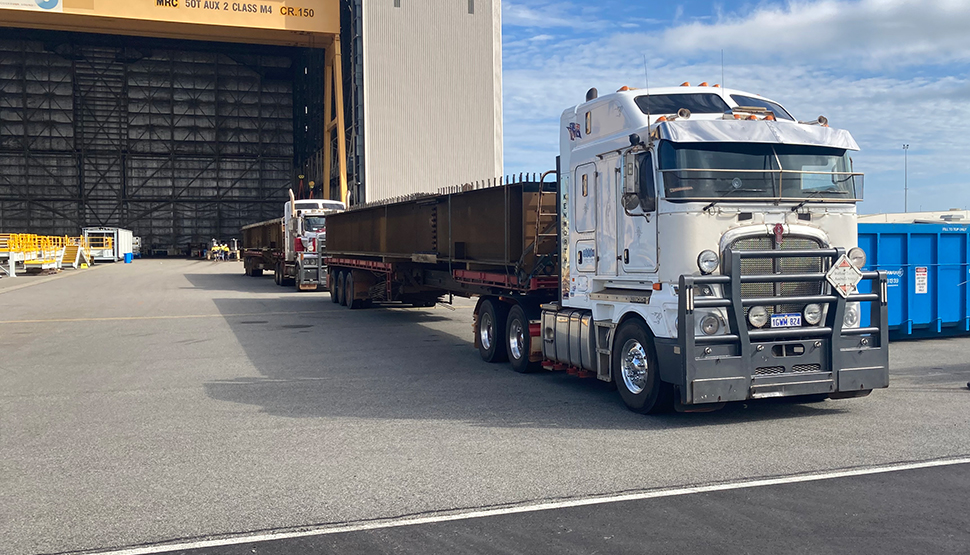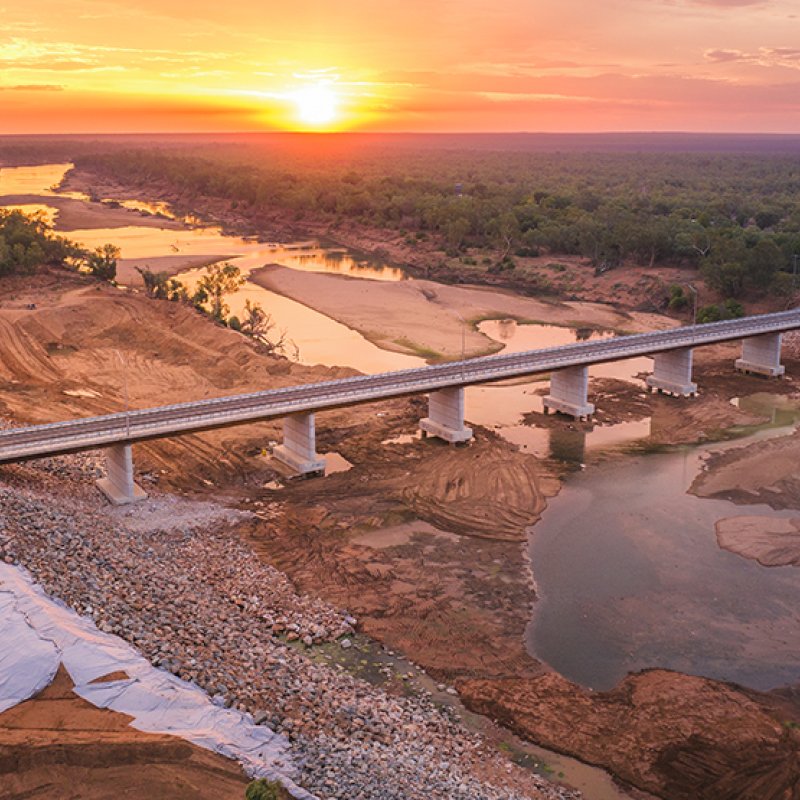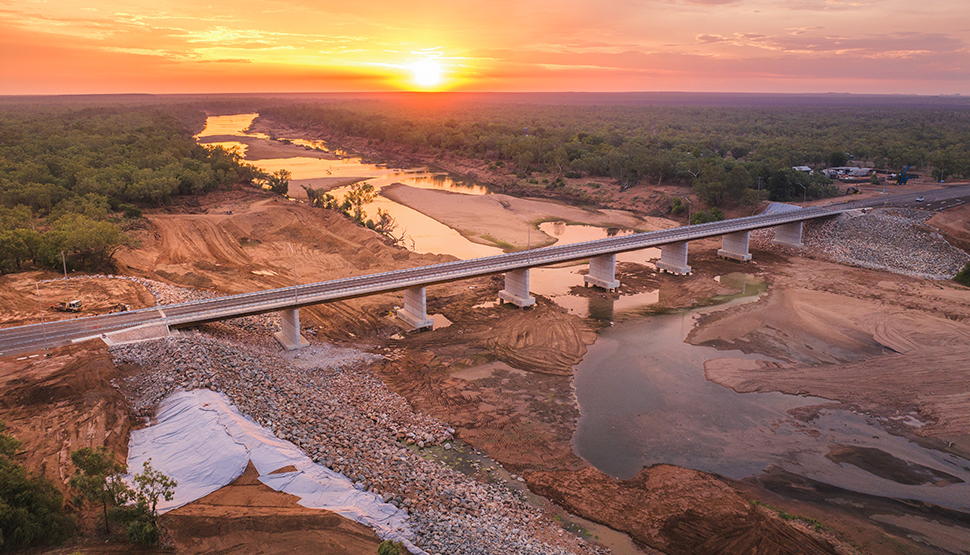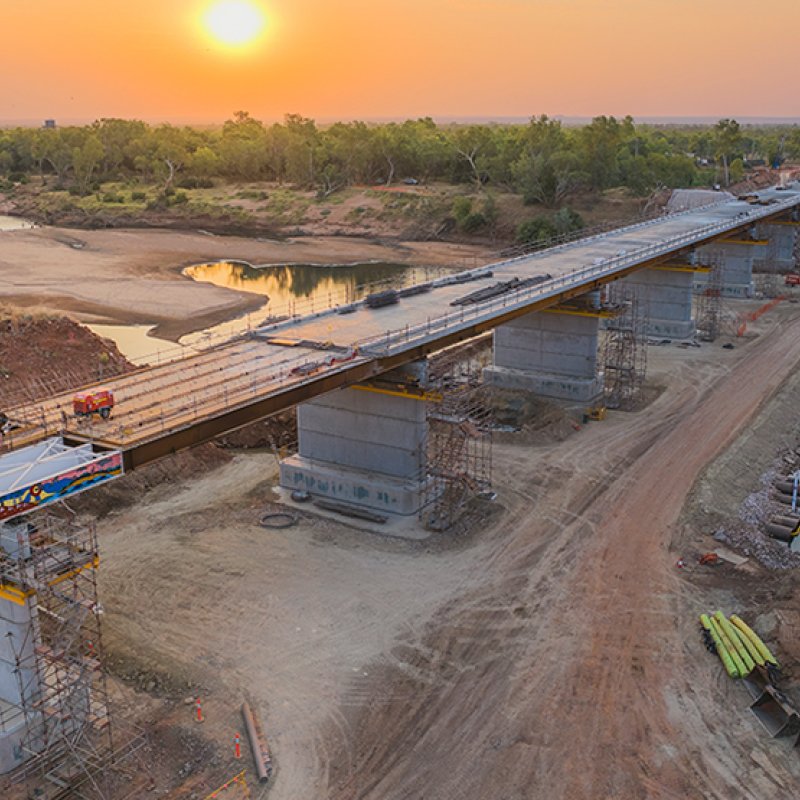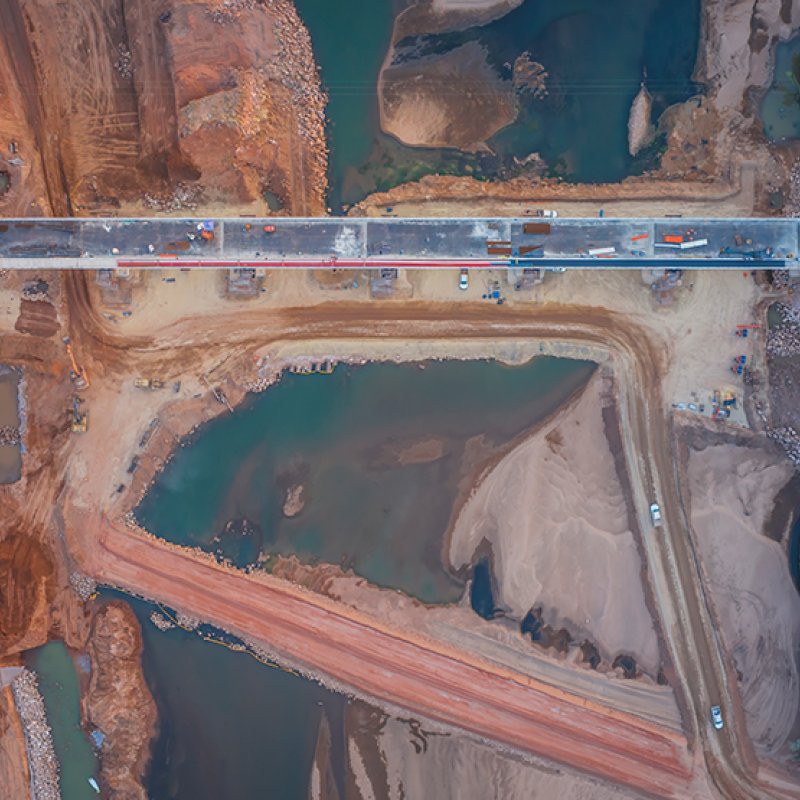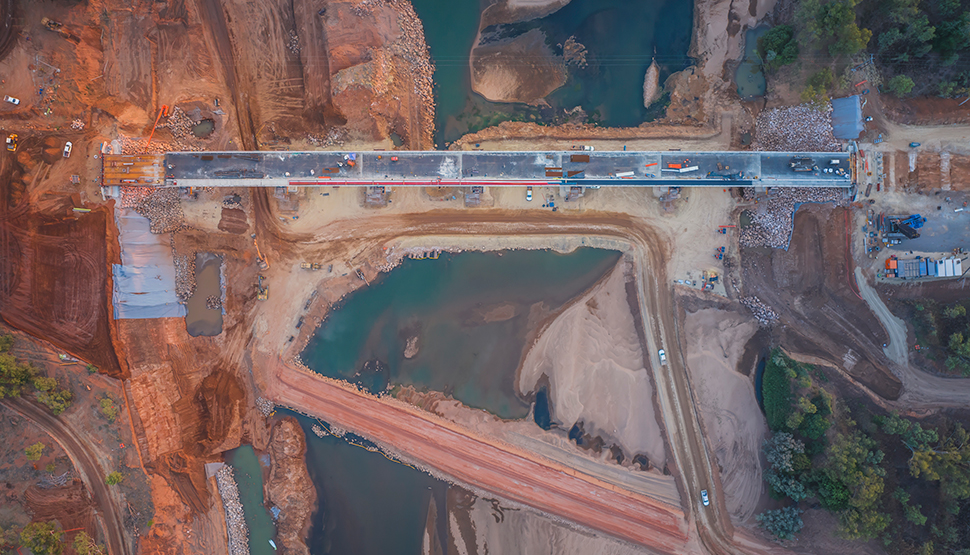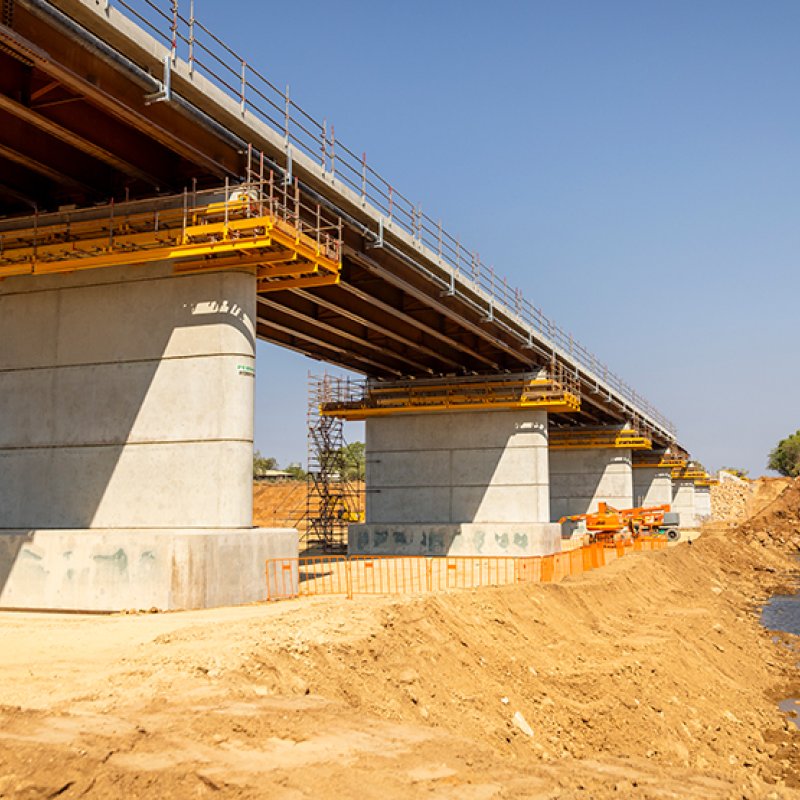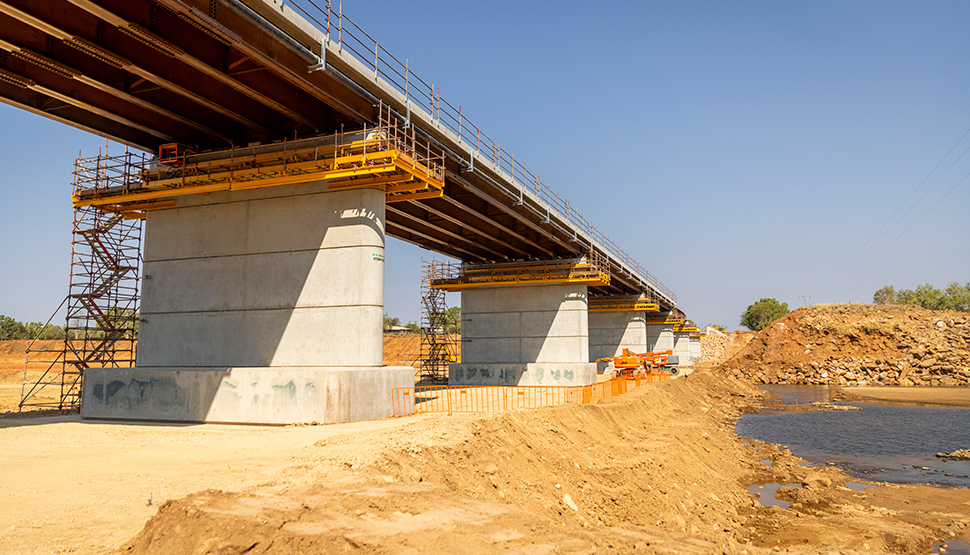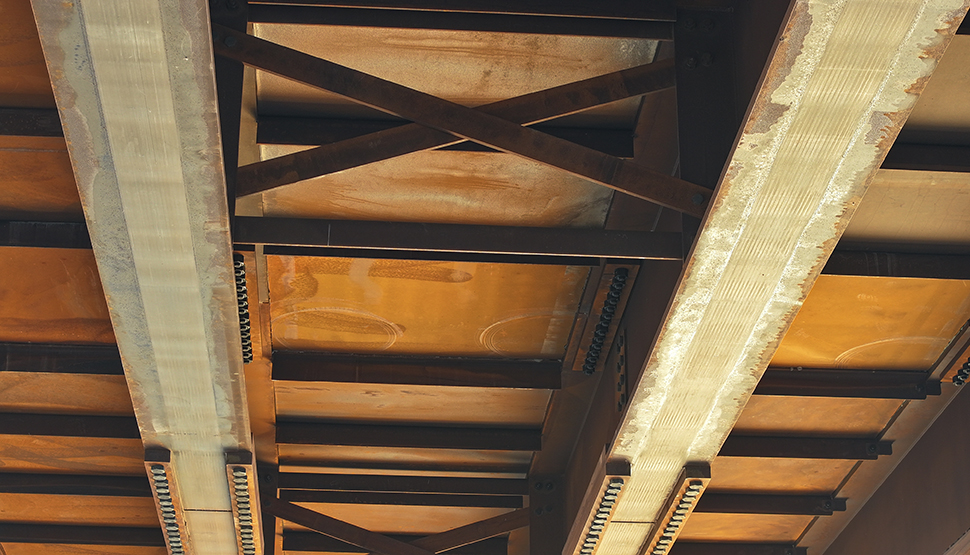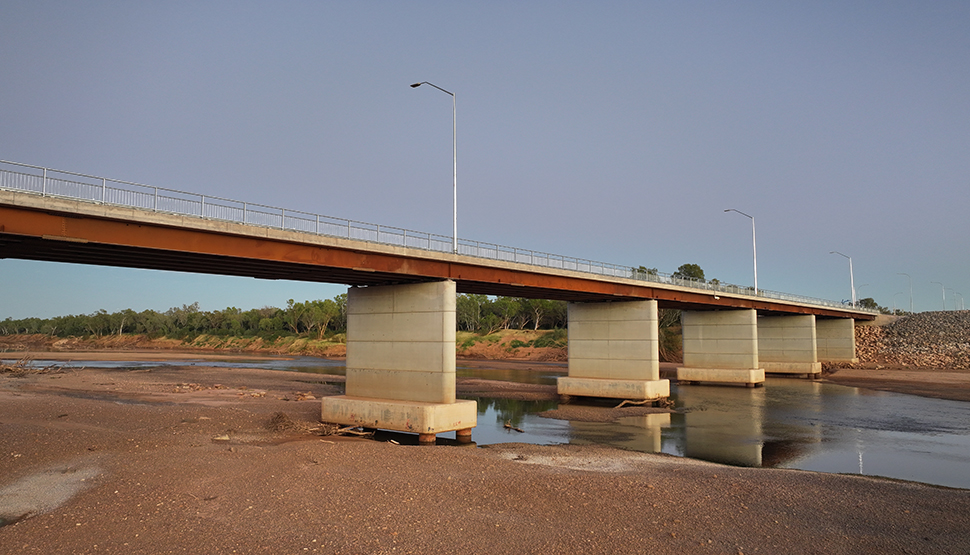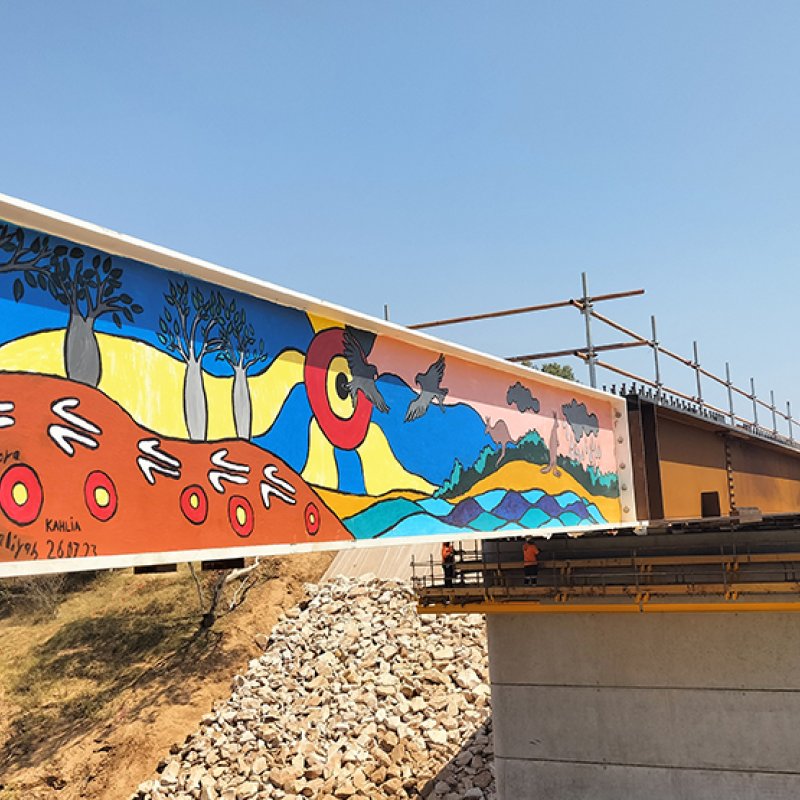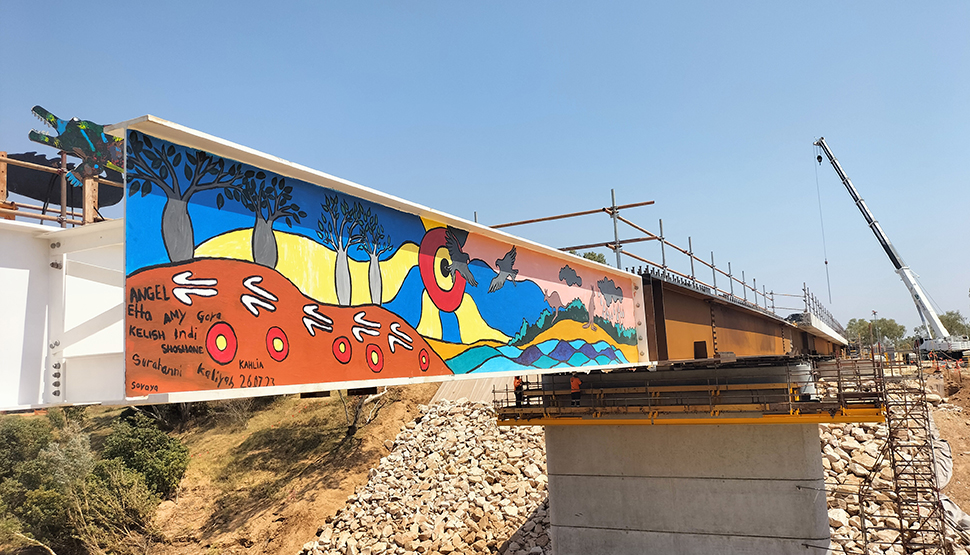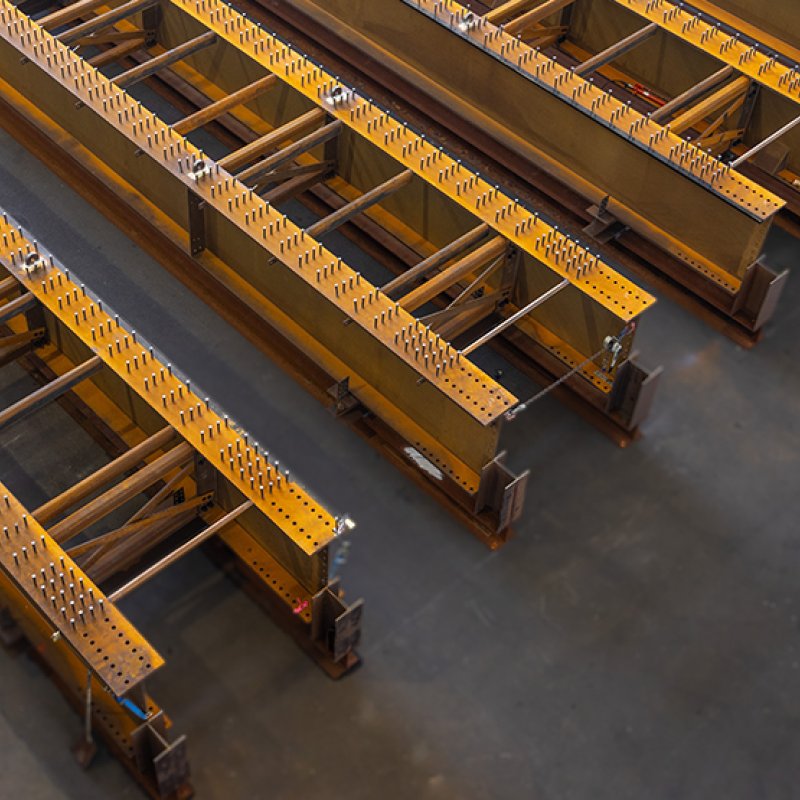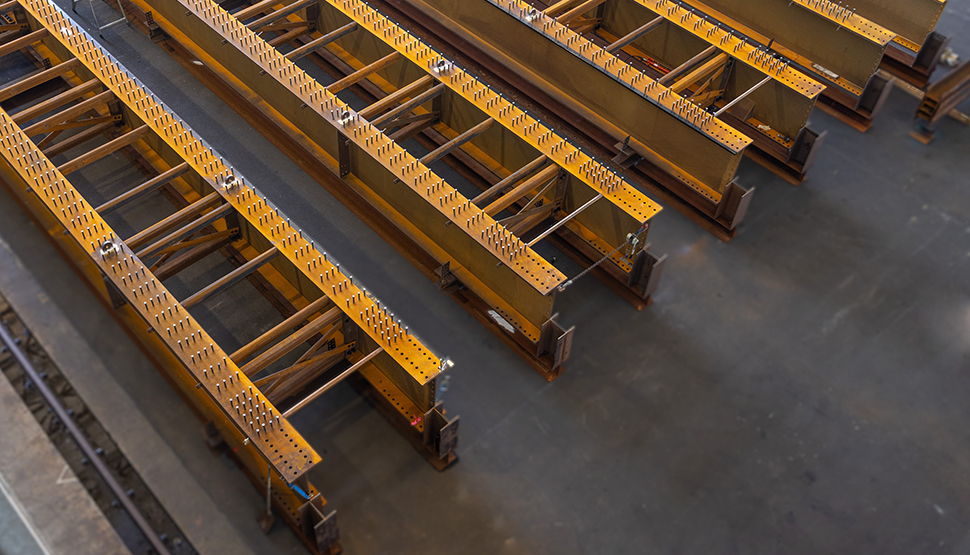Project Background
It’s late December 2022 when Ex-Tropical Cyclone Ellie crosses the NT border headed for the Kimberley coast in Northern WA. This massive storm event would result in a once-in-a-100-year flood that would see surging waters rise an unprecedented 15.8 metres, the ferocity of which would be felt across the entire Kimberley region, significantly impacting local communities, industry and commerce. As flood waters subsided, the irreparable damage to the Fitzroy River Bridge and 500 metres of the Great Northern Highway would become apparent.
This vital piece of infrastructure is a key commercial transit route for the East Kimberley and the Northern Territory, and a crucial link for local, regional and remote Indigenous communities, so its reconstruction was an economic and social imperative, unconditionally prioritised by the State and Federal Governments with funds provided through the Disaster Recovery Funding Arrangements.
With funding secured, Main Roads WA was laser-focused on expediting the tender and selection process, which saw contracts awarded in record time. This process would typically take many months, but given the project’s urgency, a progressive design approach with a collaborative construction methodology enabled the New Fitzroy Bridge to be officially opened six months ahead of its scheduled completion date. This was an outstanding achievement given the complexity of the build, challenging weather conditions, and the logistics of building in a remote location.
The contract to design and construct the new bridge was awarded to the Fitzroy Bridge Alliance, a collaboration comprising Main Roads WA, Georgiou Group Pty Ltd, BMD Constructions Pty Ltd, and engineering company BG&E Group Ltd.

